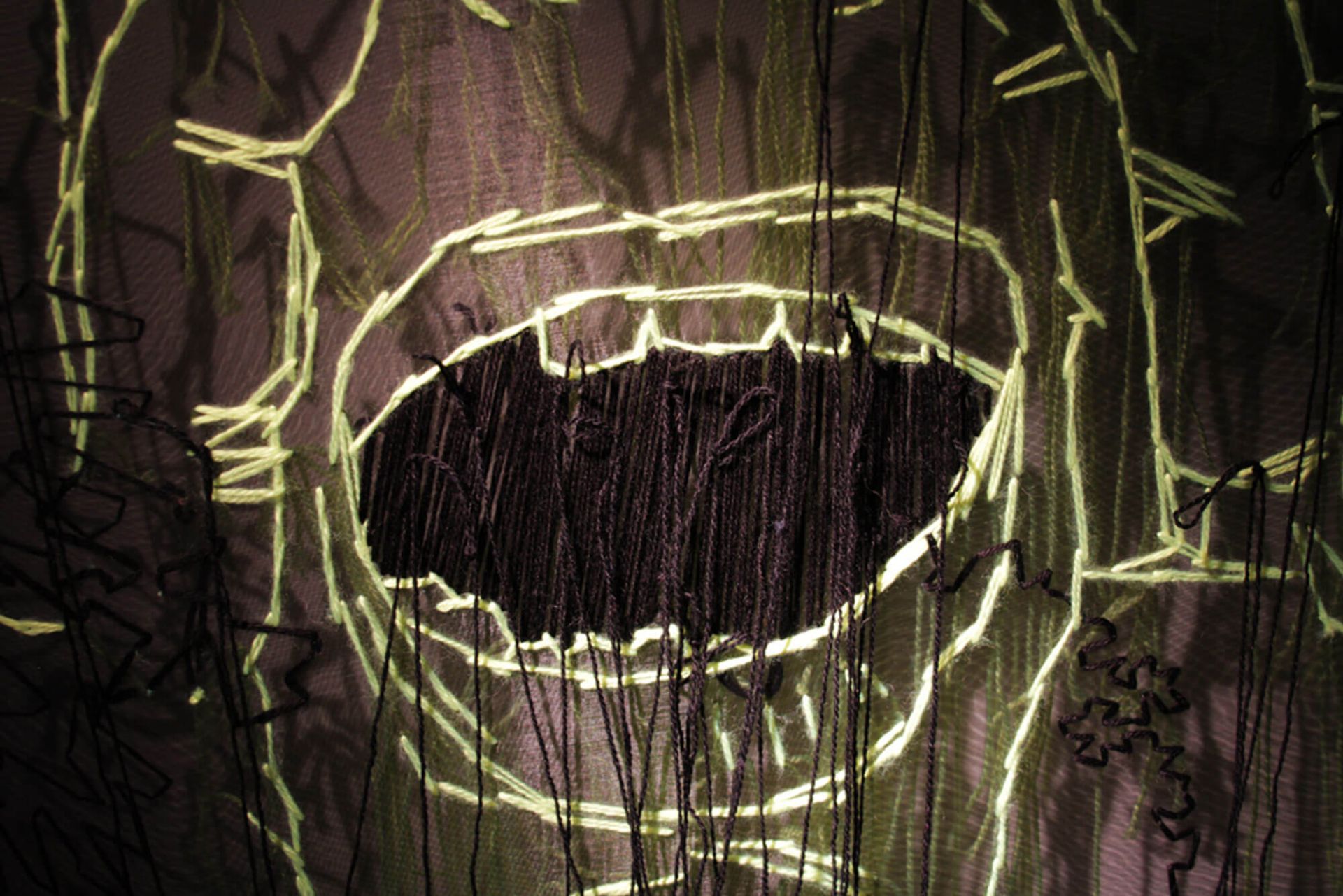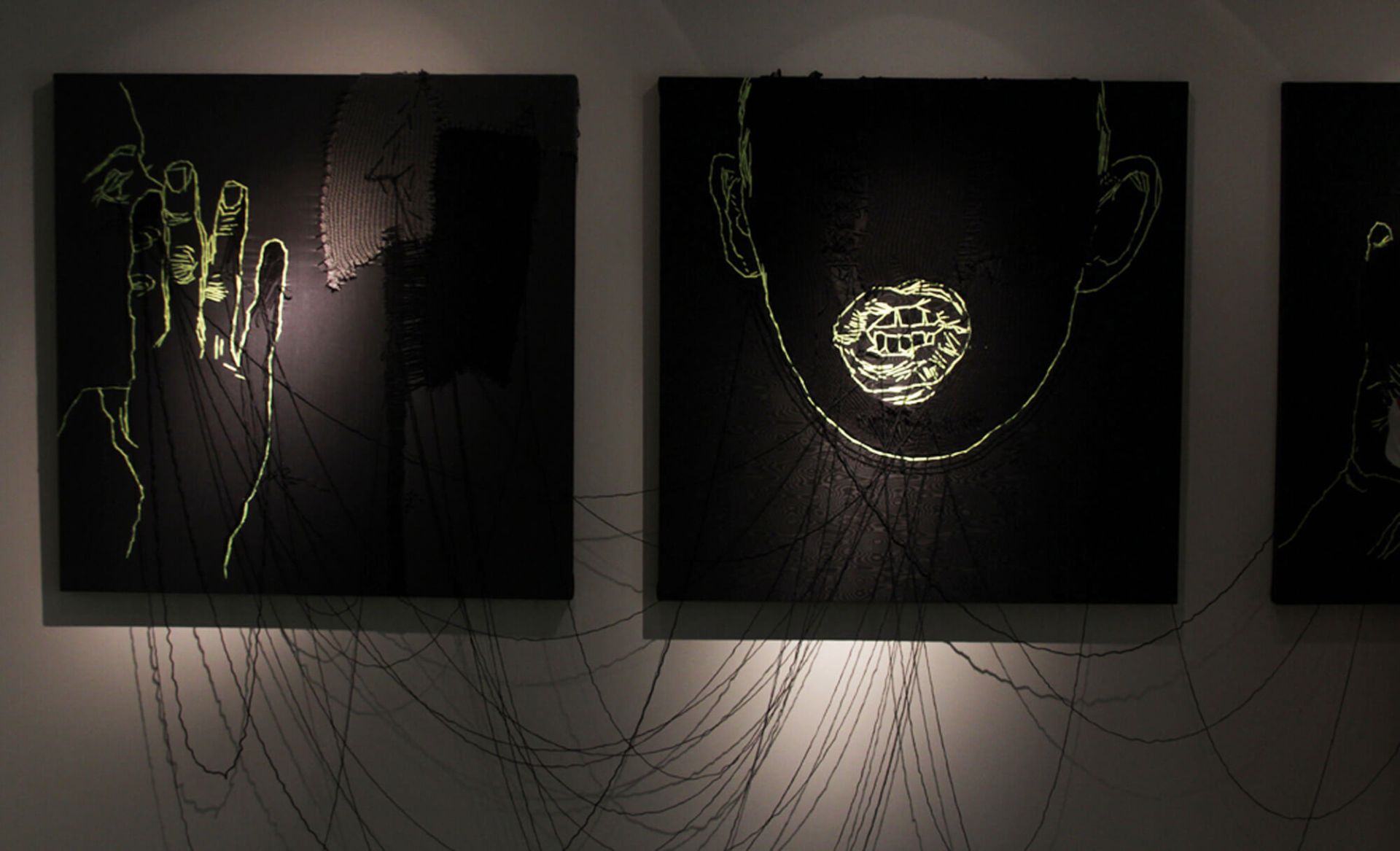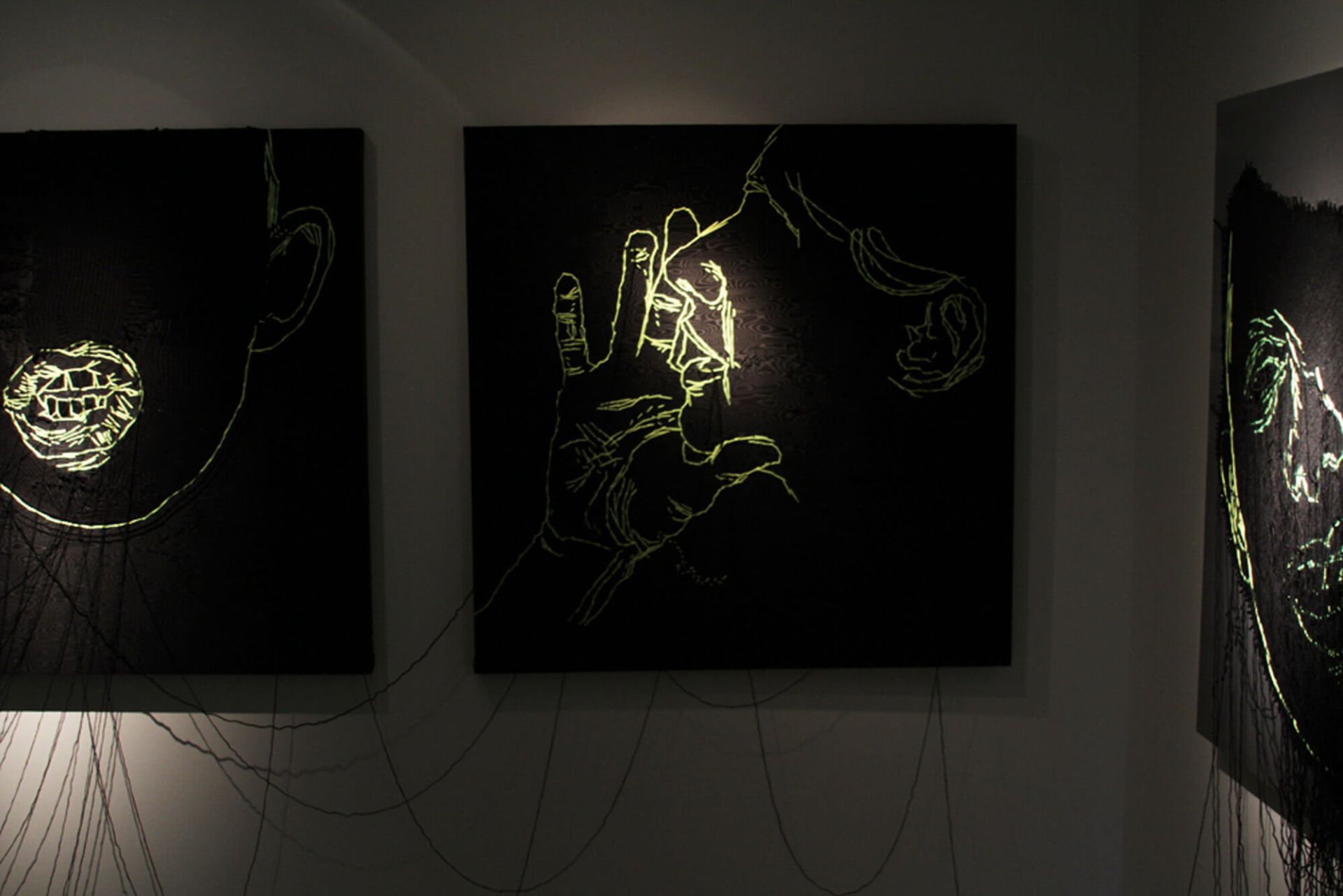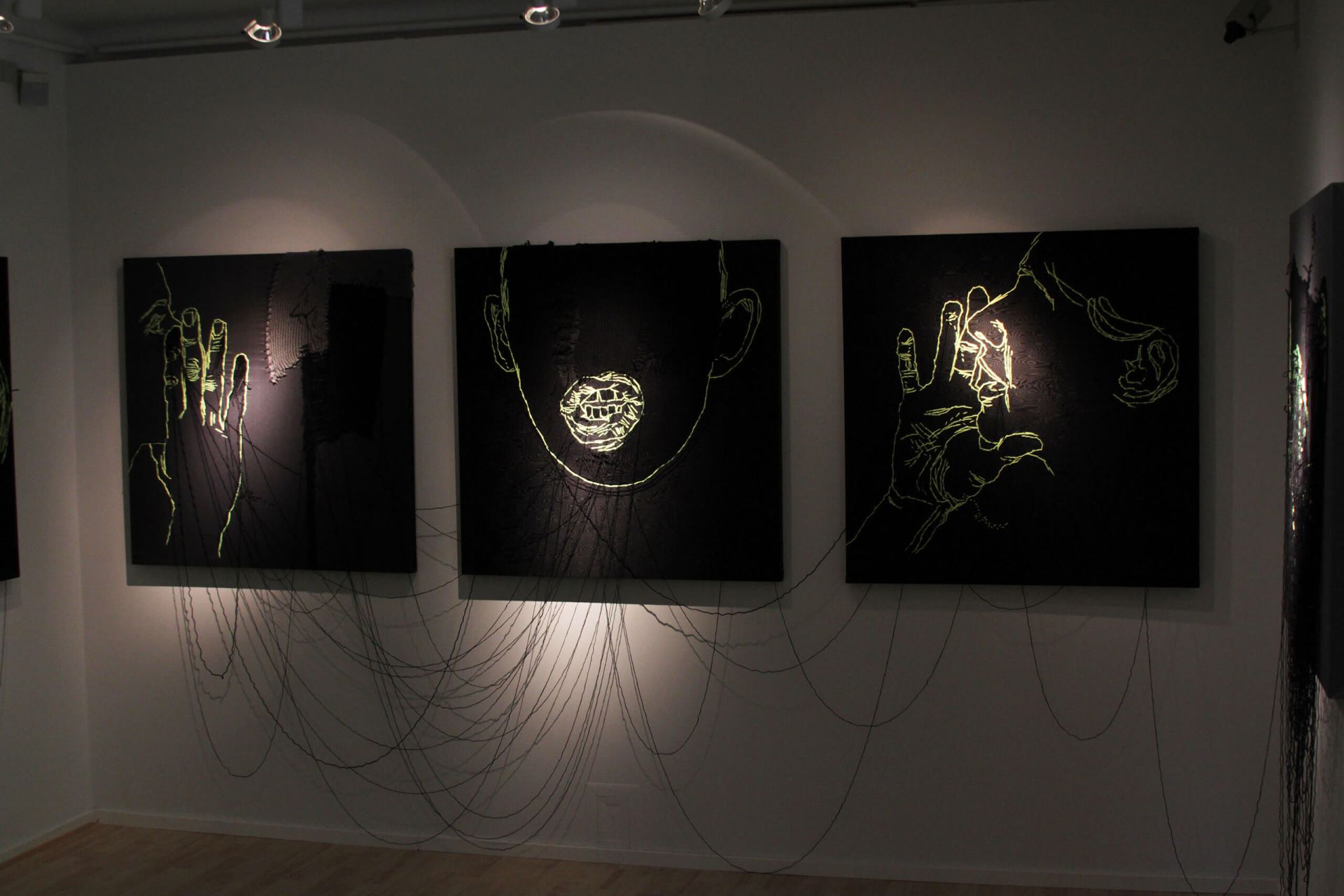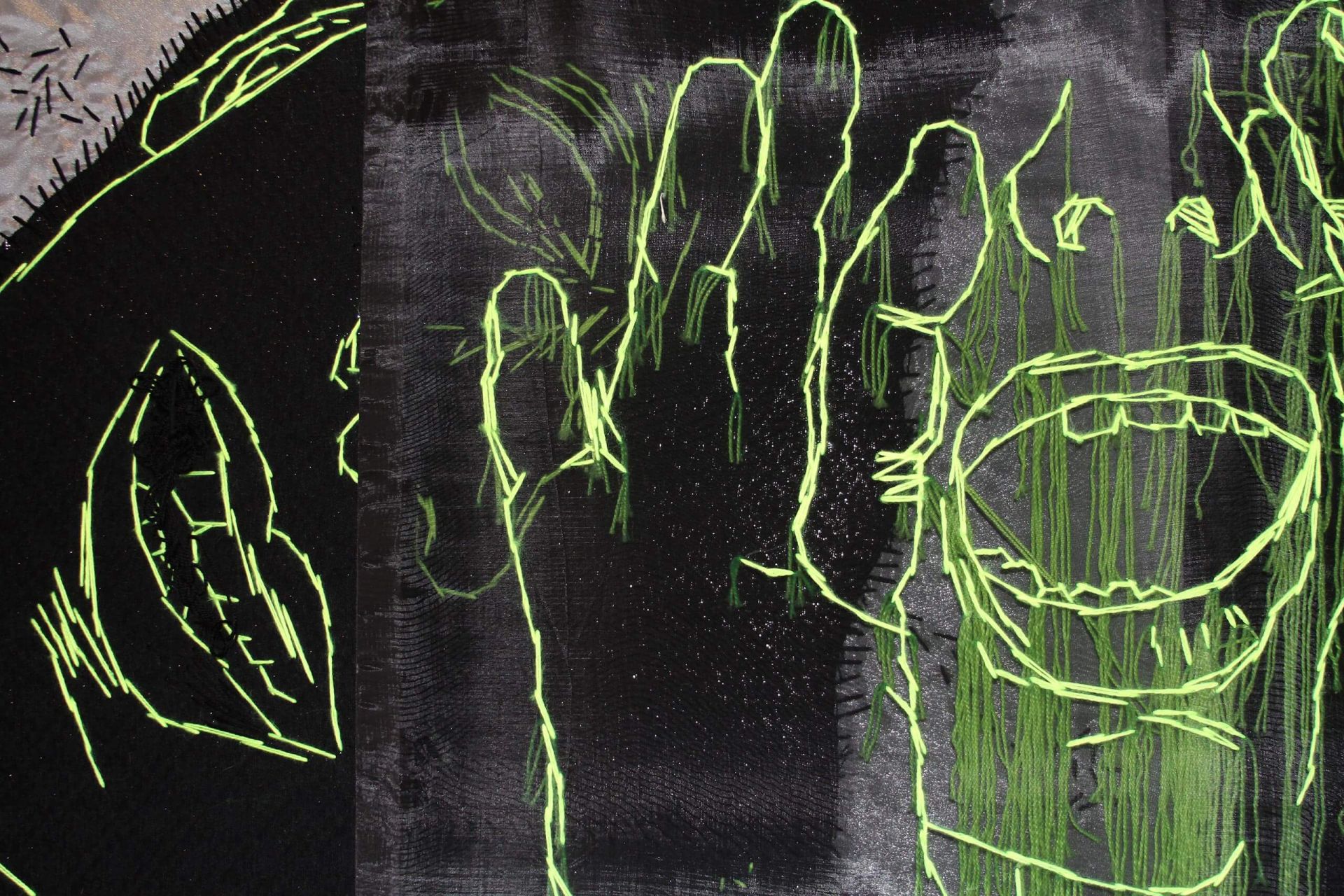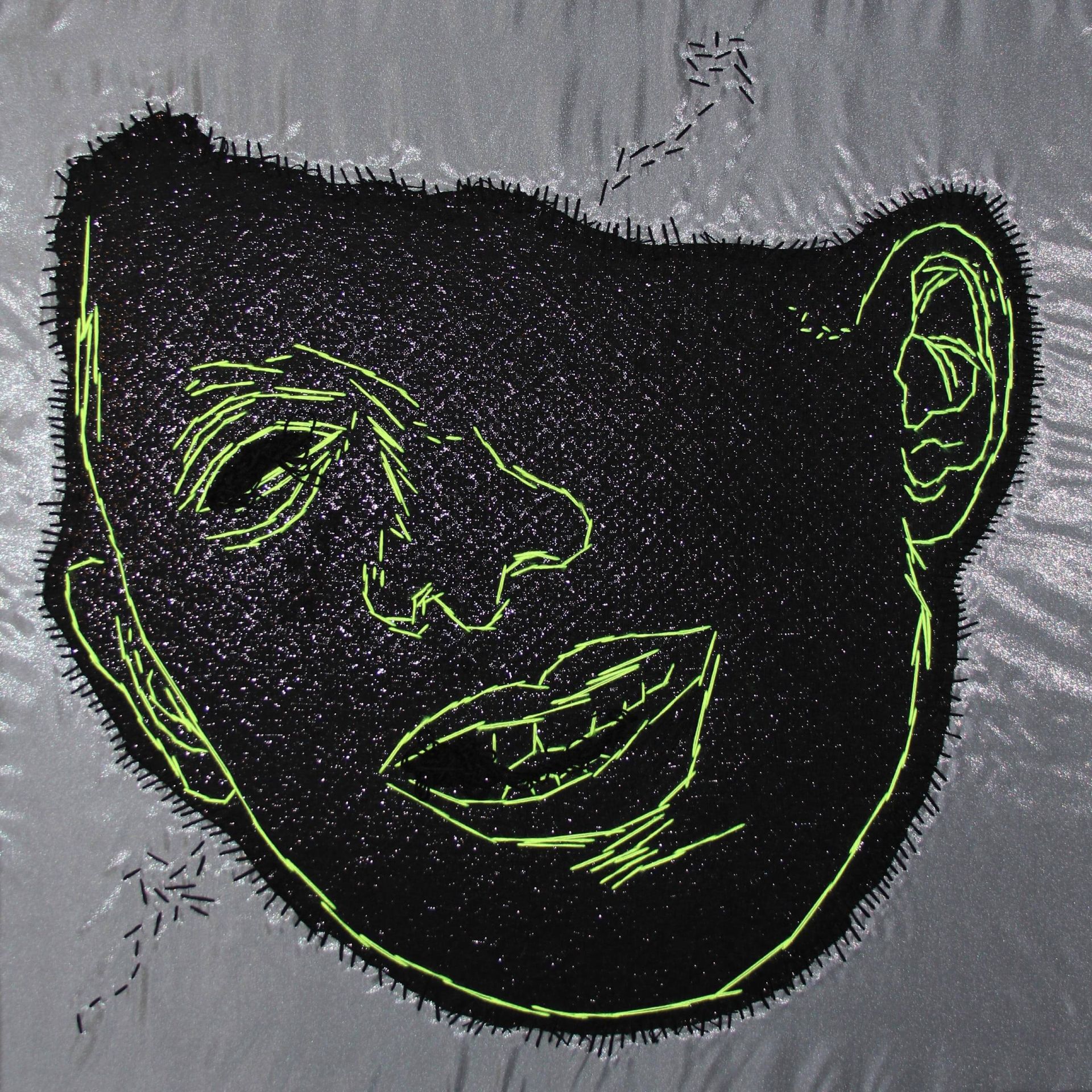Whisper
2011, Textile INSTALLATION, 7 PARTS, 100 X 100 CM
2011 — TURKU BIENNAL 2011 "PATTERNS OF THE MIND", THE ABOA VETUS & ARS NOVA MUSEUM, TURKU, FINLAND
Embroidered using vibrant fluorescent green threads on a backdrop of deep black canvas, a simplistic depiction of a face, hands, a smile, and expressions of distress illuminates the darkness. Enlarged significantly as if taken from a school workbook, this spontaneous artwork evokes memories of childhood apprehensions – those moments when indistinct sounds and shadows give rise to eerie fantasies within a dimly lit room. As stated by the artist, these visual compositions encapsulate her “inner” dialogues.
Within the obscurity, whispers, laughter, and cries intertwine. This isn’t a conventional self-portrait; rather, it’s an internal self-perception, a visualization of contemplations yet unvoiced and decisions yet unmade.
The installation’s title itself conjures both memories of suspenseful tales and expressions of affection. Whispers signify intimate, personal, and tender utterances shared with a loved one or child, which can be both puzzling and unsettling.
The figures adorning this textile polyptych appear incomplete. It remains uncertain whether they are in the process of being woven onto one side or unraveled from the other. This ambiguity and ongoing nature are pivotal to the artist’s intent.
“Whisper” symbolizes an endeavor to explore one’s inner self, to externalize emotions, to expose the inner recesses, shrouded in semi-darkness and whispers, transitioning between laughter and screams, from darkness to light, from flatness to depth, from a light-absorbing backdrop to a vividly shining illustration.
